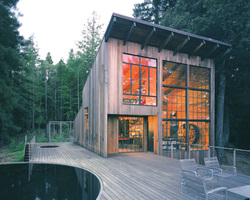Timber recycling
Timber recycling is the process of turning waste timber into usable products.
Recycling timber is a practice that became commercial in the 1990s as issues such as deforestation and climate change hit the headlines, prompted both timber suppliers and consumers to turn to a more sustainable timber source as people aimed to reduce there carbon footprint.
This form of timber production is the most environmentally friendly and is very common in countries such as Australia and New Zealand where supplies of old wooden structures are plentiful but it is catching on in countries all over the world as old buildings are being disassembled.
Recycling of timber is sometimes seen in modern buildings to lower costs and lower a buildings carbon footprint. Examples of this include recycled timber flooring, doors or as an external cladding.
Timber can effectively be chipped down into wood chips which then can be used to power heating in homes or industrial power plants.
Drawbacks
There are also drawbacks in the recycling and reclaiming of timber. Demolition must happen in such a way as to preserve as much of the timber as possible in a building, which means more time spent dismantling a building rather than just tearing it down quickly. There may be a stigma associated with using "used" or "cheap" wood that is perceived to be of not as high quality as "new" wood.
Case study
Breuer/Lundberg Cabin

American based Lundberg Design developed a building made almost completely from recycled and reclaimed building materials, most of which was timber. The majority of the materials have been from various other projects that the architects have worked on.
The exterior cladding is reclaimed redwood. The interior walls are thin strips of Montana white pine. With the majority of this building constructed from timber it allows the client to use what would be expensive building materials but reduced costs for the client as they are reclaimed materials. It means the building also has green credentials.
